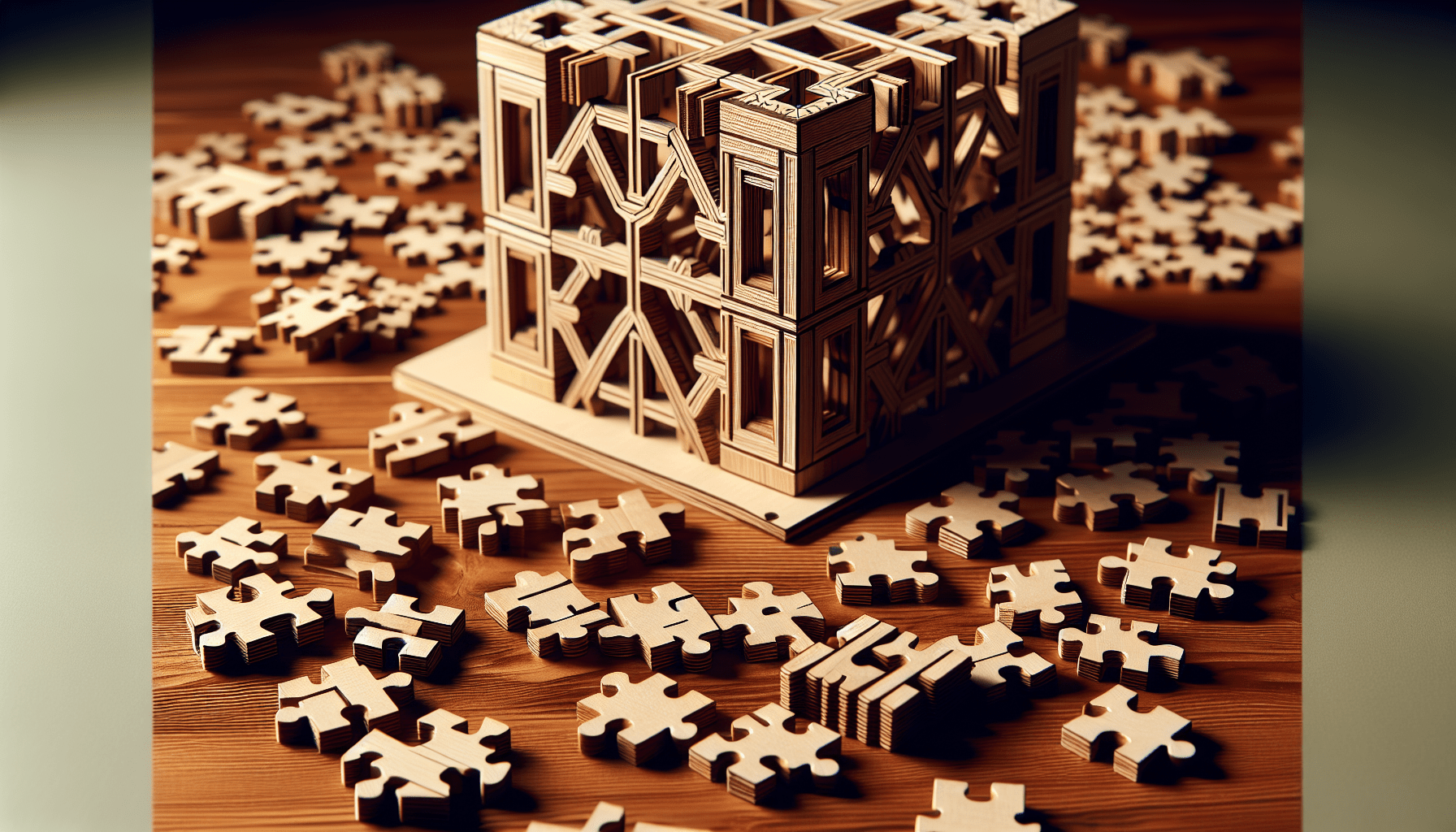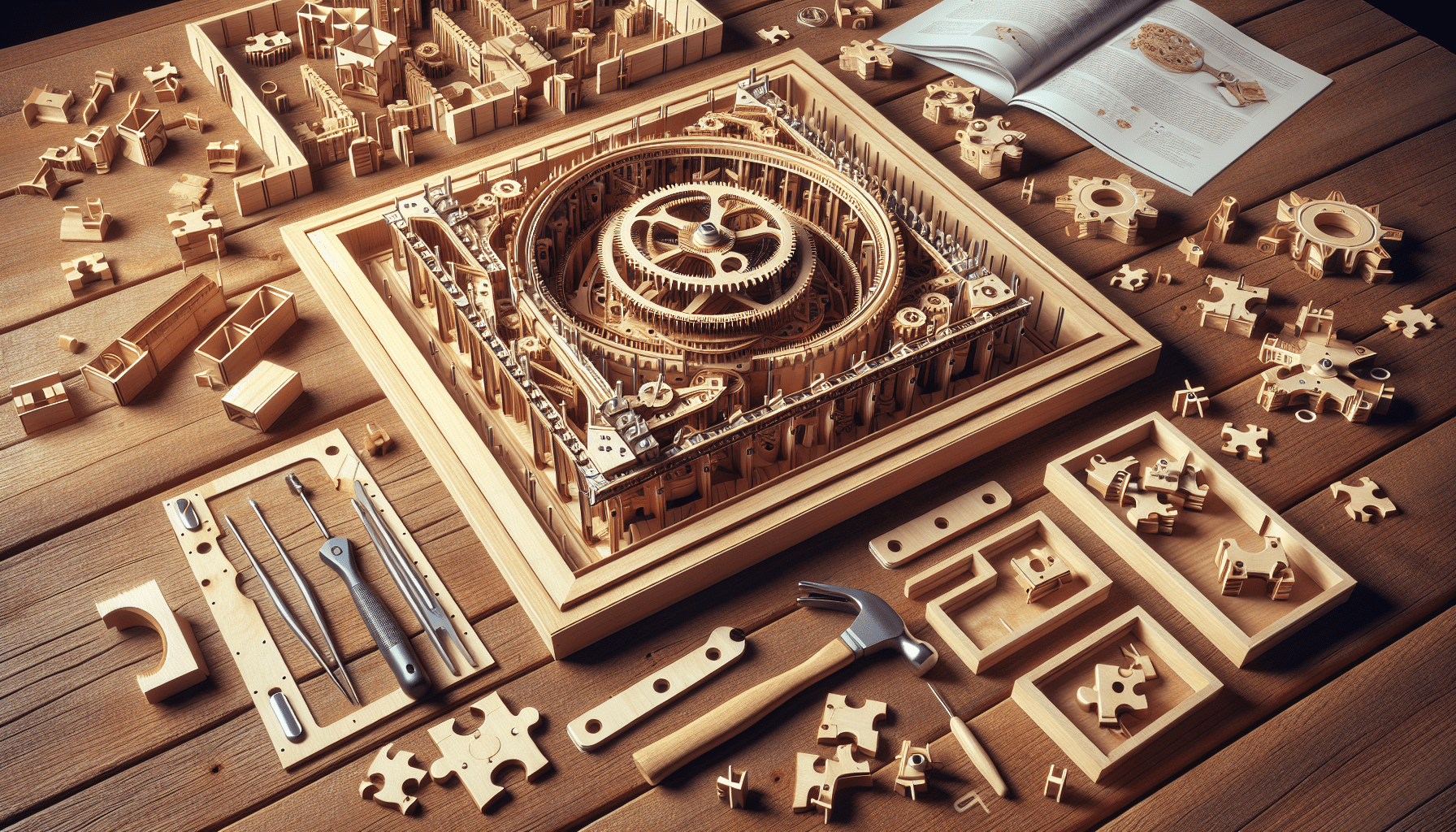Are you wondering whether 3D wooden puzzles are difficult to assemble?
Understanding 3D Wooden Puzzles
Before diving into the difficulty level of 3D wooden puzzles, it is essential to understand what they are. Crafted by companies like Robotime, Rokr, Ugears, and similar brands, these puzzles are designed to form three-dimensional structures when assembled. Imagine a typical jigsaw puzzle but with an additional dimension that brings the final product to life in fascinating forms.
Types of 3D Wooden Puzzles
3D wooden puzzles vary significantly in design and complexity. Here are some common types:
| Type | Description |
|---|---|
| Mechanical Models | Often featuring moving parts, these models can include intricate designs such as clocks, trains, or cars. |
| Architectural Models | Replicas of buildings, famous landmarks, or bridges that require precise assembly. |
| Animal Models | Realistic representations of animals, from dinosaurs to household pets. |
| Fantasy Models | Designs inspired by mythical creatures or imaginative worlds. |
Popular Brands
Several brands have become well-known for their high-quality 3D wooden puzzles. Each brand offers a unique collection of puzzles that can suit different tastes and skill levels.
| Brand | Characteristics |
|---|---|
| Robotime | Known for their detailed and functional models such as clocks, music boxes, and vehicles. |
| Rokr | Specializes in mechanical puzzles with intricate designs and moving parts. |
| Ugears | Offers a range of models, focusing on mechanical and architectural themes with impressive levels of detail. |
Factors Influencing Difficulty
The difficulty of 3D wooden puzzles can be subjective and influenced by several factors. Let’s break these down to make it easier to understand:
Number of Pieces
Much like conventional puzzles, the number of pieces in a 3D wooden puzzle significantly impacts its difficulty. A puzzle with more pieces will naturally take longer to assemble and may pose more challenges.
Intricacy of Design
The complexity of the design is another key factor. Puzzles with intricate moving parts, such as mechanical models, can be more challenging than simpler architectural or animal models.
Assembly Instructions
The quality and clarity of the assembly instructions play a vital role. Clear, well-illustrated instructions make the assembly process smoother and more enjoyable.
Required Tools and Skills
Some 3D wooden puzzles require additional tools like glue or a small hammer. Basic DIY or modeling skills may also be beneficial, especially for more intricate designs.
Age and Experience
Individual age and experience levels also matter. A child or a beginner might find a complex mechanical puzzle daunting, whereas a seasoned adult puzzle enthusiast might relish the challenge.
Skill Levels And Recommendations
Let’s categorize 3D wooden puzzles according to skill levels, providing recommendations for each:
| Skill Level | Description | Recommended Puzzles |
|---|---|---|
| Beginner | Suitable for those new to 3D wooden puzzles, usually featuring fewer pieces and simpler construction. | Basic robotic models, simple architectural structures, basic animal figures |
| Intermediate | For those with some experience, featuring moderately complex designs and more pieces. | Intermediate mechanical models, detailed architectural landmarks, more complex animal models |
| Advanced | Suitable for seasoned enthusiasts, featuring high piece counts and intricate designs requiring advanced skills and patience. | Complex mechanical puzzles, elaborate buildings, detailed fantasy models |
Beginner Level
Beginner-friendly puzzles are typically straightforward and present a manageable challenge. They are perfect for building foundational skills and boosting confidence.
Example Recommendation:
- Robotime’s Catapult Model: A simple yet engaging mechanical model suitable for beginners.
Intermediate Level
Intermediate puzzles are ideal for those looking to step up their game. These offer a good balance between challenge and enjoyment without being overwhelming.
Example Recommendation:
- Rokr’s Pendulum Clock: A moderately complex model with some moving parts, great for those with some experience.
Advanced Level
Advanced puzzles are for the true aficionados. These intricate and detailed puzzles require patience, precision, and often, additional tools or specific skills.
Example Recommendation:
- Ugears’ Steam Locomotive: An intricate and detailed mechanical model that offers a fulfilling challenge for advanced users.
Tips for Assembling 3D Wooden Puzzles
Successfully assembling a 3D wooden puzzle doesn’t just rely on skill; it also benefits from good habits and strategies. Here are some tips to help you along the way:
Read the Instructions Thoroughly
Before beginning, take the time to read through the entire instruction manual. This helps you understand the flow of assembly and anticipate any tricky steps.
Organize the Pieces
Sorting and organizing the pieces before you start can save significant time and reduce frustration. Group similar pieces together and keep them within reach.
Take Your Time
Patience is key. Rushing through the process increases the likelihood of mistakes, which can be difficult to rectify.
Use the Right Tools
Ensure you have the necessary tools on hand, such as glue or a small hammer. Having the right tools can make assembly smoother and more enjoyable.
Seek Help from the Community
If you get stuck, don’t hesitate to seek help. Many online forums and communities are dedicated to 3D wooden puzzles and can offer valuable tips and advice.
Common Challenges and How to Overcome Them
Even seasoned puzzle enthusiasts encounter challenges. Here’s how you can identify and overcome common issues:
Misaligned Pieces
Misaligned pieces can be a common issue, especially with intricate designs. Double-checking the alignment and making minor adjustments can solve this problem.
Missing Pieces
Sometimes pieces might go missing. Carefully check your workspace and the packaging. If a piece is genuinely missing, contacting the manufacturer can often resolve the issue.
Difficulty Following Instructions
Instructions can sometimes be complex or unclear. Supplement the manual with video tutorials or online guides if you find certain steps confusing.
Benefits of 3D Wooden Puzzles
Aside from the joy of assembly, 3D wooden puzzles offer numerous benefits, which make them a worthwhile hobby.
Cognitive Benefits
- Enhanced Problem-Solving Skills: Working on these puzzles sharpens your ability to think critically and solve problems.
- Boosted Creativity: The intricate designs stimulate your imagination and creativity.
- Improved Concentration: Focusing on assembling the puzzle can enhance your concentration and attention to detail.
Emotional Benefits
- Stress Relief: Engaging in this tactile activity can be a great way to unwind and reduce stress.
- Sense of Accomplishment: Completing a challenging model gives a tremendous sense of satisfaction and achievement.
- Mindfulness: The process requires you to be present and mindful, offering a meditative experience.
Educational Benefits
- STEM Learning: Many mechanical models offer insights into basic principles of mechanics and engineering.
- Historical Knowledge: Architectural models of landmarks provide learning opportunities about history and culture.
- Fine Motor Skills: Assembling these puzzles bolsters dexterity and fine motor skills.
Frequently Asked Questions
Let’s address some common queries about 3D wooden puzzles.
Are They Suitable for Children?
Yes, many 3D wooden puzzles are designed to be child-friendly. However, it’s crucial to choose age-appropriate models to ensure safety and accessibility.
How Long Do They Take to Assemble?
The time required can vary dramatically depending on the puzzle’s complexity and the assembler’s skill level. It can range from a few hours for simpler models to several days or even weeks for more intricate designs.
Can They Be Disassembled and Reassembled?
While some wooden puzzles can be disassembled and reassembled, repeated assembly may wear out the pieces. It is generally best to treat them as more permanent structures once completed.
Do They Require Glue?
Not all 3D wooden puzzles require glue. Many are designed with interlocking pieces that fit snugly together. However, for certain models and specific parts, a bit of glue may be recommended to ensure stability.
Personal Experience and Recommendations
In my experience, the journey of assembling 3D wooden puzzles can be immensely rewarding. Through various models, ranging from simple animal figures to intricate mechanical clocks, I have found joy, challenges, and a wealth of learning.
My First 3D Wooden Puzzle
One of my first encounters was with a basic animal model. Despite its simplicity, the satisfaction it brought was profound, sparking my interest in more complex models.
Progressing to Intermediate Models
With time, I moved on to intermediate puzzles like detailed architectural landmarks. Each model was a stepping stone, preparing me for more challenging designs.
Tackling Advanced Models
Advanced models such as Ugears’ Steam Locomotive brought their fair share of challenges. However, the sense of accomplishment upon completion was unmatched, making every effort worthwhile.

Conclusion
The difficulty of 3D wooden puzzles can vary greatly depending on several factors, including the number of pieces, the intricacy of the design, and the assembler’s experience level. For beginners, starting with simpler models can build confidence and foundational skills, whereas more experienced enthusiasts might find advanced puzzles both challenging and rewarding. Regardless of the difficulty level, assembling 3D wooden puzzles offers numerous cognitive, emotional, and educational benefits, making it a fulfilling and enriching hobby. So, whether you are a novice or a seasoned puzzle solver, there’s a perfect 3D wooden puzzle out there waiting for you to discover and enjoy.
